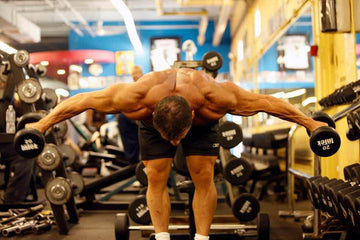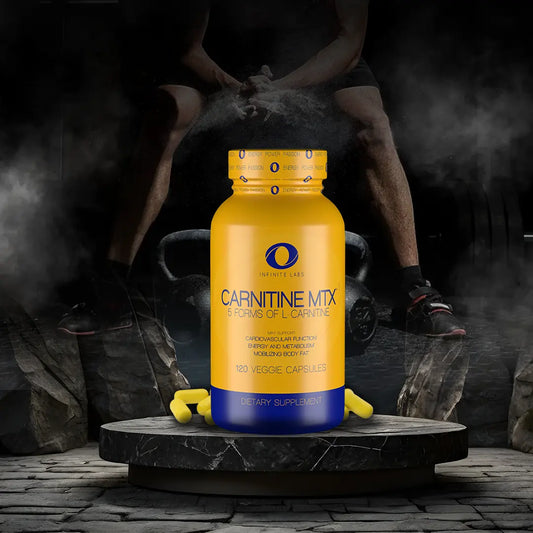

Best Training System to Gain Mass
Table of Contents
Best Training System to Gain Mass
By: Robbie Durand
Eight Time Mr. Olympia Ronnie Coleman trained one way: heavy. Ronnie Coleman’s workouts were legendary and this put the notion that many bodybuilders follow that in order to build muscle, you have to lift heavy weights. Lee Haney, was also eight time Mr. Olympia but his workout philosophy was much different. Lee Haney trained by the motto of, “Stimulate, Don’t Annihilate.” Haney believed in using proper form and advocated, “Quality not Quantity.”
Haney and Coleman both won eight Olympias with very different training strategies. One trained extremely heavy while the other advocated high volume with lighter weights. Noteworthy is the research of Professor Fry back in 2004 which analyzed numerous studies on muscle growth of both type I and II fibers and found that there was a dose-dependent response between intensity (i.e. amount of weight lifted) and muscle growth. The data suggested that maximal hypertrophy occurs with loads from 80-95% 1RM. However, there appeared to be a range where most benefits were observed around 80-85 % maximal intensity or about 8-12 repetitions. Since this time, a number of studies have come out which suggest that muscle growth can occur with light weight as with the case of tourniquet training or training with low oxygen can trigger muscle growth.
 A collection of studies published last year in the European Journal of Sports Science found substantial increases in muscle strength and hypertrophy following low-load training. However, the magnitude of increases were not as great as that associated with using heavier loads, and a trend for superior gains was in fact shown when lifting weights >65% 1RM. So that leaves the question, if you want to pack on size, is it better to use heavier weight like eight time Mr. Olympia Ronnie Coleman or revert back to the days of Haney where lighter weight with more of any emphasis on volume? A new study by one of the leading experts in the field of hypertrophy, Brad Schoenfeld has shed some light on this age old question and his finding may surprise you.
A collection of studies published last year in the European Journal of Sports Science found substantial increases in muscle strength and hypertrophy following low-load training. However, the magnitude of increases were not as great as that associated with using heavier loads, and a trend for superior gains was in fact shown when lifting weights >65% 1RM. So that leaves the question, if you want to pack on size, is it better to use heavier weight like eight time Mr. Olympia Ronnie Coleman or revert back to the days of Haney where lighter weight with more of any emphasis on volume? A new study by one of the leading experts in the field of hypertrophy, Brad Schoenfeld has shed some light on this age old question and his finding may surprise you.
Researchers compare the effect of low- versus high-load resistance training on muscular adaptations in well-trained subjects. Eighteen young men experienced in resistance training were matched according to baseline strength, and then randomly assigned to 1 of 2 experimental groups: a low-load resistance training routine where 25-35 repetitions were performed per set per exercise, or a high-load resistance training routine where 8-12 repetitions were performed per set per exercise. During each session, subjects in both groups performed 3 sets of 7 different exercises representing all major muscles. Training was carried out 3 times per week on non-consecutive days, for 8 total weeks.

At the end of the study, Both high-load resistance training and low-load resistance exercise conditions produced significant increases in thickness of the elbow flexors (5.3 vs. 8.6%, respectively), elbow extensors (6.0 vs. 5.2%, respectively), and quadriceps femoris (9.3 vs. 9.5%, respectively), with no significant differences noted between groups.
Improvements in back squat strength were significantly greater for high-load resistance training compared to low-load resistance exercise (19.6 vs. 8.8%, respectively) and there was a trend for greater increases in 1RM bench press (6.5 vs. 2.0%, respectively). Upper body muscle endurance (assessed by the bench press at 50% 1RM to failure) improved to a greater extent in low-load resistance exercise compared to high-load resistance training (16.6% vs. -1.2%, respectively).
These findings indicate that both high-load resistance training and low-load resistance exercise training to failure can elicit significant increases in muscle hypertrophy among well-trained young men; however, high-load resistance training training is superior for maximizing strength adaptations. In sum, this study is actually quite revolutionary because it shows that you can build muscle with high reps of 25-35 repetitions just as well as using a heavier weight with 8-12 repetitions, although strength gains were greater using heavier weights.
The primary take-home points from the study are as follows:
• Gains in muscle mass are about the same regardless of repetition range provided training is carried out to muscle failure.
• In order to build maximal strength requires the use of heavy loading
• Muscle endurance is best obtained from the use of light loads
References:
Andrew C. Fry, The Role of Resistance Exercise; Intensity on Muscle Fibre Adaptations; Sports Med 2004; 34 (10): 663-679.
Nishimura A, Sugita M, Kato K, Fukuda A, Sudo A, Uchida A. Hypoxia increases muscle hypertrophy induced by resistance training. Int J Sports Physiol Perform. 2010 Dec;5(4):497-508.
Yasuda T, Ogasawara R, Sakamaki M, Bemben MG, Abe T. Relationship between limb and trunk muscle hypertrophy following high-intensity resistance training and blood flow-restricted low-intensity resistance training. Clin Physiol Funct Imaging. 2011 Sep;31(5):347-51.
Schoenfeld BJ, Peterson MD, Ogborn D, Contreras B, Sonmez GT. Effects of Low-Versus High-Load Resistance Training on Muscle Strength and Hypertrophy in Well-Trained Men. J Strength Cond Res. 2015 Apr 3.
Schoenfeld BJ, Wilson JM, Lowery RP, Krieger JW. Muscular adaptations in low-versus high-load resistance training: A meta-analysis. Eur J Sport Sci. 2014 Dec 20:1-10.
MUSCLE MEDIA MAGAZINE FOR MEN
The premier source of training, nutrition, supplements, fat loss and health for men.

















